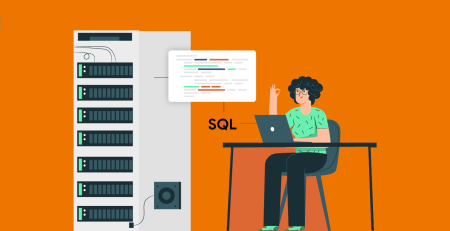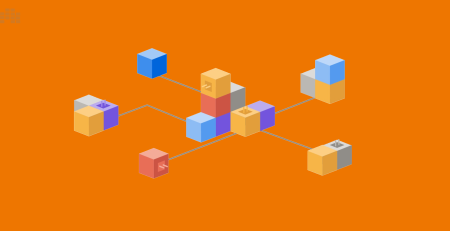Major Software Architecture Patterns
What are software architecture patterns?
Architectural patterns allow for the reuse of tried-and-true good design structures. Software architects have been searching for methods to record and utilize the architectural knowledge that has historically been successful.
A collection of design choices that are frequently utilized in practice, have well defined qualities that may be reused, and describe a group of architectures are more precisely referred to as architectural patterns.
Selecting, modifying, and combining patterns can be thought of as the process of creating an architecture. The software architect must choose how to use a pattern, how to adapt it to the particular situation, and how to adhere to the limits of the issue. And we’ll talk about it in more depth later.
The five main patterns of software architecture identified by Mark Richards in his book “Software Architecture Patterns” are the microkernel, the microservice, the layered architecture, the event-based, and the space-based patterns.
1.Microkernel pattern
A plug-in architectural pattern is another name for the microkernel pattern. It is frequently employed when software development teams design systems with replaceable parts.
It is relevant to software systems that have to be flexible enough to meet evolving system needs. It distinguishes between a basic functioning core and additional functionality and client-specific components. It also acts as a socket where these extensions can be plugged in to collaborate.
The microkernel architecture pattern is a logical paradigm to use when implementing applications that are product-based. An application that is based on a product is one that is packaged and made accessible for download in the same way as a regular third-party product. However, many businesses now create and publish their in-house business apps, replete with versions, release notes, and pluggable features, just like software products.
The microkernel design pattern offers extensibility as well as feature separation and isolation by allowing you to add other application features as plug-ins to the main program.
A core system and plug-in modules are the two different sorts of architecture components that make up the microkernel architecture pattern. Application features and customized processing logic are extensible, flexible, and isolated thanks to the division of application logic between independent plug-in modules and the fundamental core system. Additionally, the microkernel architecture pattern’s core system typically only has the bare minimum of functionality needed to keep the system running.
The Eclipse IDE is arguably the best illustration of the microkernel design. When you download the free version of Eclipse, all you get is an editor. However, once you begin incorporating plug-ins, it transforms into a very configurable and useful product.
Advantages:
- Great flexibility and extensibility
- Some implementations allow for adding plug-ins while the application is running
- Good portability
- Ease of deployment
- Quick response to a constantly changing environment
- Plug-in modules can be tested in isolation and can be easily mocked by the core system to demonstrate or prototype a particular feature with little or no change to the core system.
- High Performance as you can customize and streamline applications to only include those features you need.
Best for:
- Applications that take data from different sources, transform that data and writes it to different destinations
- Workflow applications
- Task and job scheduling applications
2.Microservices pattern
When you create your application as a collection of microservices, you’re essentially creating several connected applications. Teams can construct microservices independently of one another because each has a unique set of responsibilities. The communication between them is their only point of dependence. It is your responsibility to ensure that messages transmitted between microservices stay backwards-compatible when they interact with one another.
Advantages:
- You can write, maintain, and deploy each microservice separately
- Easy to scale, as you can scale only the microservices that need to be scaled
- It’s easier to rewrite pieces of the application because they’re smaller and less coupled to other parts
- New team members must quickly become productive
- The application must be easy to understand and modify
- Highly maintainable and testable – enables rapid and frequent development and deployment
- Independently deployable – enables a team to deploy their service without having to coordinate with other teams
Best for:
- Websites with small components
- Corporate data centers with well-defined boundaries
- Rapidly developing new businesses and web applications
- Development teams that are spread out, often across the globe
3.Layered architecture pattern
The layered architecture pattern is the most prevalent pattern in architecture. The components of layered architectural patterns are arranged in horizontal tiers on an n-tiered design. The majority of software is designed using this conventional approach, which aims to be independent. This indicates that while all of the parts are related, they are independent of one another. Within the application, each layer of the layered architecture pattern is responsible for a particular task. For instance, the user interface and browser communication logic would be handled by the presentation layer, whilst the business layer would be in charge of carrying out the specific business rules related to the request.
Separating concerns among components is one of the layered architecture pattern’s strong points. Only logic specific to a certain layer is dealt with by components inside that layer.
Advantages
- High testability because components belong to specific layers in the architecture, other layers can be mocked or stubbed, making this pattern is relatively easy to test.
- High ease of development because this pattern is so well known and is not overly complex to implement, also most companies develop applications by separating skill sets by layers, this pattern becomes a natural choice for most business-application development.
- Maintainable
- Easy to assign separate “roles”
- Easy to update and enhance layers separately
Best for:
- Standard line-of-business apps that do more than just CRUD operations
- New applications that need to be built quickly
- Teams with inexperienced developers who don’t understand other architectures yet
- Applications requiring strict maintainability and testability standards
4.Event-based pattern
The most popular distributed asynchronous architecture for building highly scalable systems is this one. The architecture is made up of dedicated event processing elements that process events asynchronously while listening for them. The event-driven design creates a central unit that receives all data before delegating it to the many modules that are responsible for handling each specific type.
Advantages
- Are easily adaptable to complex, often chaotic environments
- Scale easily
- Are easily extendable when new event types appear
Best for:
- Asynchronous systems with asynchronous data flow
- User interfaces
5. Space-based pattern
Scalability and concurrency problems are addressed and resolved by the space-based architecture pattern. Additionally, it is a helpful architectural pattern for applications with uncertain and fluctuating concurrent user volumes. Replicated in-memory data grids are used in place of the central database restriction to achieve high scalability.
The processing and storage are divided among several servers in the space-based architecture in order to prevent functional collapse under heavy load.
Advantages
- Responds quickly to a constantly changing environment.
- Although space-based architectures are generally not decoupled and distributed, they are dynamic, and sophisticated cloud-based tools allow for applications to easily be “pushed” out to servers, simplifying deployment.
- High performance is achieved through the in-memory data access and caching mechanisms build into this pattern.
- High scalability come from the fact that there is little or no dependency on a centralized database, therefore essentially removing this limiting bottleneck from the scalability equation.
Best for:
- High-volume data like click streams and user logs
- Low-value data that can be lost occasionally without big consequences
- Social networks
I sincerely hope you found this article to be helpful; if you think there are any additional patterns that ought to be covered, please let me know in the comments section below! Send us a message if you have any queries; we’d be pleased to assist because this is our area of expertise!












Leave a Reply